Applications ISS resupply Design life 1 week to 2 years Operator NASA | Country of origin United States Spacecraft type Unmanned cargo vehicle Launch vehicle Antares | |
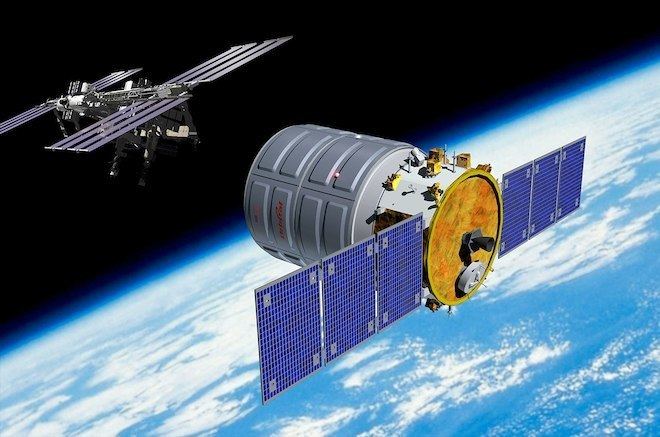 | ||
Dry mass 1,500 kg (3,300 lb) (Std)1,800 kg (4,000 lb) (Enh) Similar SpaceX Dragon, International Space Station, Soyuz, H‑II Transfer Vehicle, Cygnus CRS OA‑5 | ||
The Cygnus spacecraft is an American automated cargo spacecraft developed by Orbital ATK as part of NASA's Commercial Orbital Transportation Services (COTS) developmental program. It is launched by Orbital's Antares rocket or ULA's Atlas V and is designed to transport supplies to the International Space Station (ISS) following the retirement of the American Space Shuttle. Since August 2000 ISS resupply missions have been regularly flown by Russian Progress (spacecraft), as well as by the European Automated Transfer Vehicle, and the Japanese H-II Transfer Vehicle. With the Cygnus spacecraft and the SpaceX Dragon, NASA seeks to increase its partnerships with domestic commercial aviation and aeronautics industry.
Contents

Cygnus is the Latinized Greek word for swan and a northern constellation.
Development

With Rocketplane Kistler unable to meet funding obligations for its K-1 launch vehicle under the terms of the COTS agreement, NASA decided on October 18, 2007 to terminate its contract with Rocketplane Kistler and re-award its contract after a competition. On February 19, 2008 NASA announced that it had chosen Orbital Sciences as the new winner. On December 23, 2008, NASA awarded Orbital Sciences a $1.9 billion contract under the Commercial Resupply Services (CRS) program. Under this contract, Orbital Sciences will deliver up to 20 tons of cargo to the ISS through 2016 in eight Cygnus spacecraft flights.
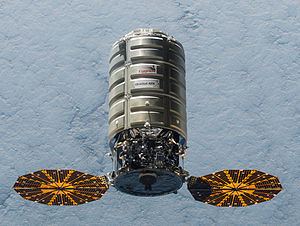
By April 2010 Orbital had displayed a full-scale model of the Cygnus cargo delivery spacecraft at the National Space Symposium (NSS) in Colorado Springs, CO.
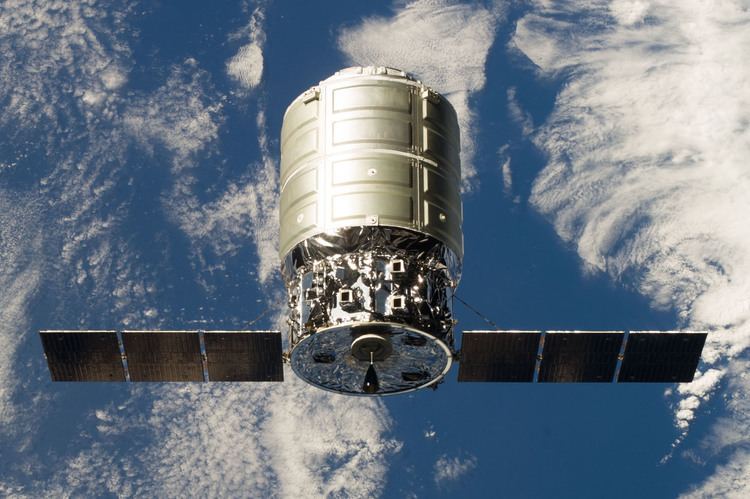
Launched on an Antares (renamed from Taurus II) medium-class launch vehicle or Atlas V, the first Cygnus flight was originally planned to occur in December 2010. The Cygnus demonstration mission was successfully launched on September 18, 2013. On January 12, 2014, the first scheduled Cygnus resupply mission arrived at the space station; the capsule carried Christmas presents and fresh fruit for the astronauts. Its arrival was delayed, first by the need to repair the station, and then by frigid weather at the launch site and solar flares that forced postponements.
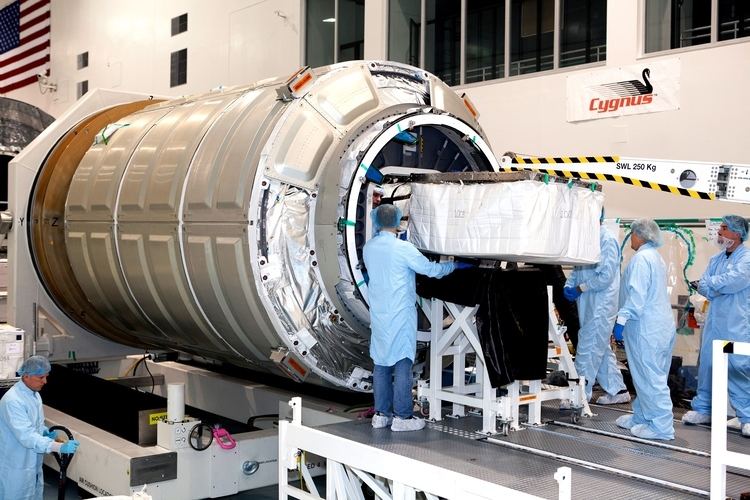
With the December 2015 launch of Orb CRS-4 on Atlas V, the Enhanced version made its debut. While it was planned from the beginning to fly on the fifth mission, the Orb CRS-3 failure and subsequent move to Atlas V meant a delay. On the other hand, the lessons learned on packing and the extra capabilities of the Atlas allowed payload to be increased to 3,500 kg (7,700 lb).
Design
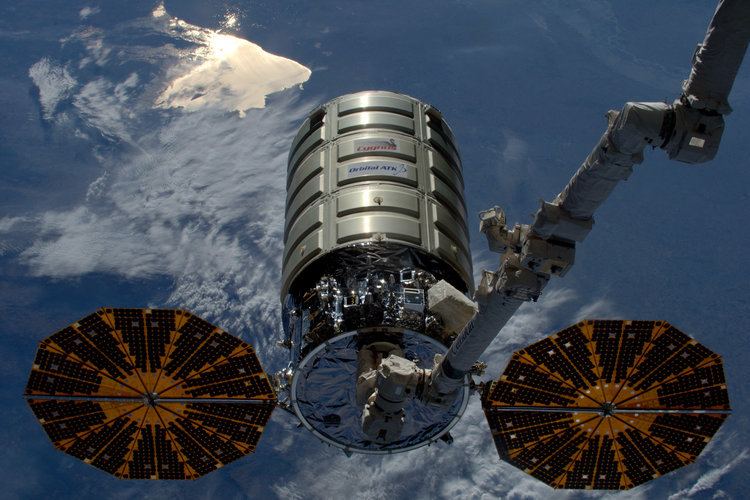
The Cygnus spacecraft consists of two basic components: the Pressurized Cargo Module (PCM) and the Service Module (SM). The PCM is manufactured by Thales Alenia Space in Turin (Italy), the initial PCMs have a volume of 18 m3. The service module is built by Orbital ATK and is based on their GEOStar and LEOStar spacecraft buss as well as components from the development of the Dawn spacecraft. It is currently expected to have a gross mass of 1,800 kg with propulsion provided by thrusters using the hypergolic propellants hydrazine and nitrogen tetroxide and is capable of producing up to 4 kW of electrical power via two gallium arsenide solar arrays. On November 12, 2009, Dutch Space announced it will provide the solar arrays for the initial Cygnus spacecraft.
The fourth and all subsequent Cygnus spacecraft are planned to be of the "enhanced" variant. These will use a stretched PCM which increases the interior volume to 27 m3 and the service module will use Orbital ATK Ultraflex solar arrays which will provide the same amount of power as the previous solar arrays but at a lower mass. A new upper stage built by Orbital ATK, the Castor 30XL, will be used in conjunction with the enhanced Cygnus; because of the more powerful upper stage and the lighter solar arrays, the payload that Cygnus can deliver to the ISS will be increased by 700 kg.
During nominal CRS missions, Cygnus maneuvers close to the International Space Station, where the Canadarm2 robotic arm grapples the spacecraft and berths it to a Common Berthing Mechanism on the Harmony module in a similar fashion to the Japanese H-II Transfer Vehicle and the other American CRS vehicle, the SpaceX Dragon. For typical missions, Cygnus is planned to remain berthed for about 30 days. Cygnus does not provide return capability, but can be loaded with obsolete equipment and trash for destructive reentry similar to the Russian Progress vehicles.
A formerly planned variant of Cygnus would have replaced the PCM with the Unpressurized Cargo Module (UCM), based on NASA's ExPRESS Logistics Carrier, and would have been used to transport unpressurized cargo, such as ISS Orbital Replacement Units. Another proposed variant would have replaced the PCM with the Return Cargo Module (RCM), which would have allowed Cygnus to return cargo to Earth.
Missions
List includes only currently manifested missions. Eight missions are currently planned to be launched from Mid-Atlantic Regional Spaceport Launch Pad 0A on Antares, while two are planned to be launched on Atlas V rocket from Cape Canaveral SLC-41.
The PCM of each mission thus far has been named after a deceased NASA astronaut.
